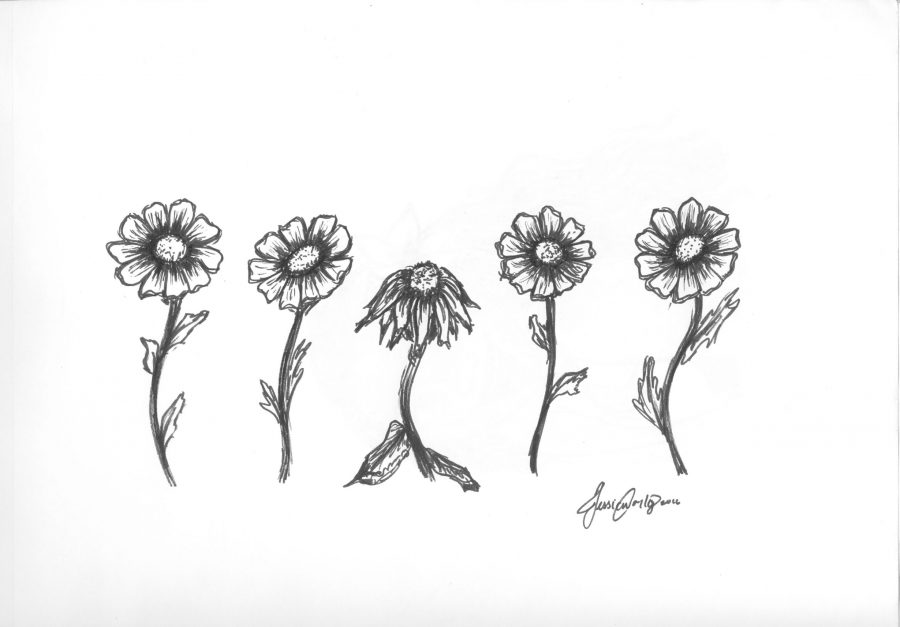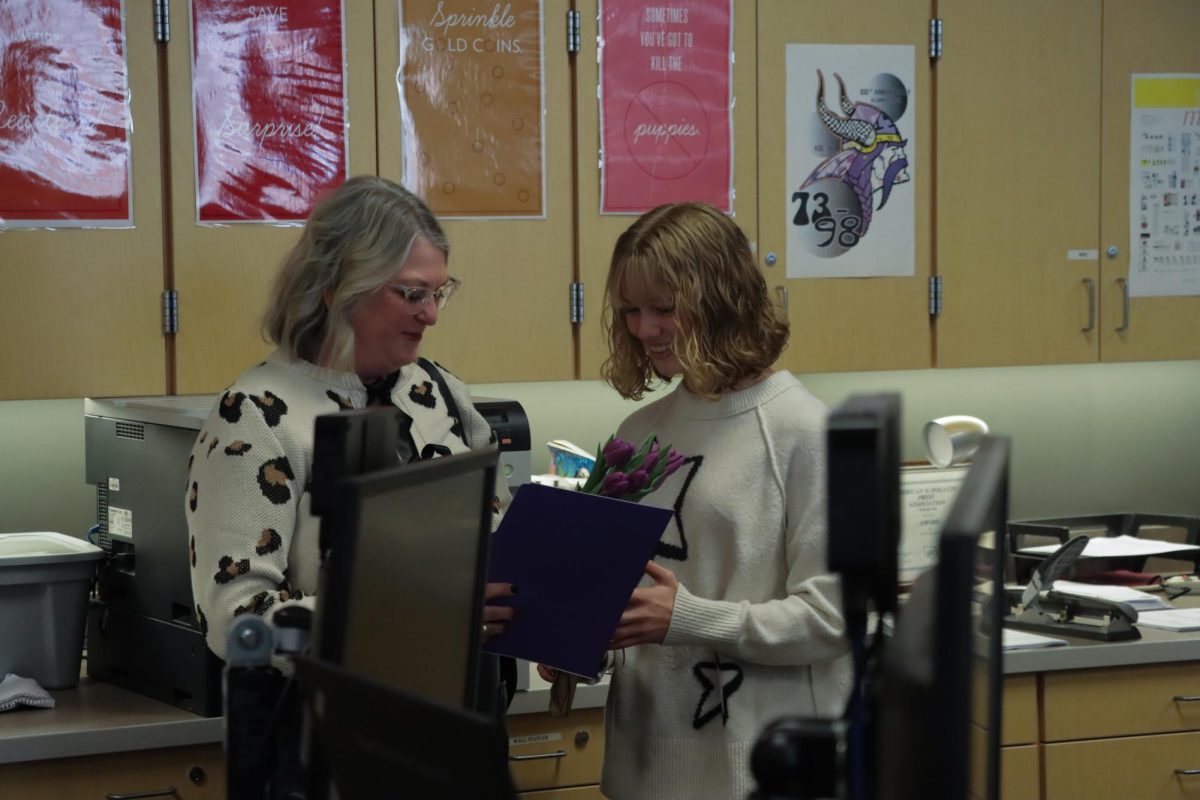Every two minutes, someone in America is sexually assaulted, according to Washington Coalition of Sexual Assault Programs (WCSAP).
Every two minutes, someone is forced into some sort of sexual action, which includes rape, groping or torture in a sexual manner.
Every two minutes, a friend, spouse, child, sibling or parent is violated and forced to engage in a sexual activity against his or her will.
Nationally, women have a one in six chance of being sexually assaulted, according to Rape, Abuse and Incest National Network (RAINN). In Washington alone, females have more than a one in three chance of being sexually assaulted and 80 percent of those women will be under age 18 (WCSAP). To put things in perspective, according to this statistic, 298 of the 896 girls at Puyallup High School will encounter sexual assault.
Males are not excluded from this narrative. Approximately one in 33 males will experience attempted or completed rape or sexual assault in their lifetime (RAINN).
As a result of this type of trauma, survivors can react in a variety of ways. Post-traumatic stress disorder is just one symptom, says Dr. Brian P. Gendron, Assistant Professor of Psychology and Statistics at Los Angeles Pierce College.
“It will affect everyone differently but like any trauma, sexual assault has the power to lead to serious mental health issues, such as major depressive disorder, substance abuse and even suicide,” Gendron said.
Rachel Taylor, Prevention Service Specialist at King County Sexual Assault Research Center spends most of her time working with teens, teaching them about consent, healthy relationships and boundaries. Like Gendron, Taylor emphasized that every survivor will react differently.
“What we know about survivors of sexual assault is that everybody responds differently and everybody’s healing is going to look different and take different amounts of time. We cannot say that people that have experienced sexual assault will respond by x,y,z,” Taylor said.
Every survivor is not going to feel and cope in the same way. Regardless of gender or age, every victim will have their own reaction and their own healing process.
“We just know that every person that goes through this responds in their own way, heals in their own way and their path to that can look very different. As far as ‘does the feeling look or feel the same throughout the whole process,’ that is a really individualized question that is going to be different for every person that experiences it,” Taylor said.
Traumatic experiences such as sexual assault can scar people of all ages but children are especially vulnerable, says Gendron.
“When the brain is still developing (particularly in the first 25 years of life, with the first 10 or so years being extra malleable) our world view is beginning to become solidified,” Gendron said. “When trauma occurs, this leads to actual damage to the nervous system which can then lead to maladaptive thoughts and behaviors. Adults are not exempt from risk, of course. Trauma can lead to mental health disorders for anyone.”
Sexual assault or any traumatic experience can also cause victims to take blame or feel guilt. PHS counselor Michael Sanchez says that victims often lose themselves amidst the trauma.
“They might start to have guilty feelings about self, they lose interest in life and certain things, they can spiral into a deep depression in which they no longer want to live or just be. They tend to lose themselves in a sexual assault situation,” Sanchez said. “Some people rebound very quickly but that would be an outlier… Usually that tends to be because they have the ability to compartmentalize their feelings.”
Another common reaction to sexual assault is the inability to trust.
“Survivors have had their trust broken or they may be feel very betrayed because of this experience, so it may be normal for them to have a hard time trusting other people. Folks that are supporting a survivor might be able to help rebuild some of that trust by setting really clear boundaries and sticking to what they say they are going to do,” Taylor said.
Consistency and keeping organized can also help build back trust.
“If they stick to a promise [and say] that they are going to be there, it can be really helpful if they are reliable in that way and follow through. A lot of survivors also might feel powerlessness; they have had their power taken away from them in a really impactful way,” Taylor said. “Something that communities can do to help rebuild their power is to make sure they are in the driver’s seat when it comes to their own healing process.”
Sexual assault betrays a victim’s trust and can lead to emotional and mental damage. Survivors may be unable to block out unwanted thoughts and may suffer from very expressive emotions, according to the National Sexual Violence Resource Center (NSVRC). Along with trust issues, this can lead to an inability to form relationships.
“One major perspective in psychology, known as psychodynamic theory, formulated by Sigmund Freud, might argue that victims of trauma tend to have a difficult time forming healthy relationships in the future. Their sense of trust might be affected and their world view or what they consider ‘normal’ might actually be related to their trauma and thus they might enter into relationships that end up increasing the chance of being victimized again,” Gendron said.
An aspect that can further damage a survivor’s ability to trust is acquaintance rape. Often times sexual abuse is perpetrated by a trusted family member or friend, which can be difficult to process for victims and their families, says Gendron.
In eight out of 10 rape cases, the victim knew the person who sexually assaulted them (NSVRC). Acquaintance makes matters worse because the victims are hurt by someone they care about in a really impactful way. It can be hard for the survivors to come forward, says Taylor.
“A lot of survivors are not coming forward because they are afraid they will not be believed and if this perpetrator is someone in their community and well-liked in their community, it might be met with the reactions of people who do not believe them or say things like ‘oh I know that person and they would never do something like that.’ It can be really hard and really harmful for a survivor to come forward and not be believed because we know they might just retreat back into themselves and not continue seeking help and the support that they need,” Taylor said.
Gendron suggests that males might be less likely than females to report a sexual assault incident.
“One particular issue you might consider is the social stigma male victims of sexual assault might face in our society. Men are particularly less likely to report victimization, because of this stigma and unfortunately, in many communities there are less resources for male victims,” Gendron said.
Victim blaming is another aspect of sexual assault that can continue to affect survivors even after the physical assault.
“We see victim blaming happening a lot when someone comes forward with a story of sexual assault and our culture might respond by saying ‘you should not have been with that person, I do not know why you got in the car with that person or why were you walking home late at night?’ All of those statements work to place the accountability for sexual assault on the victim, rather than where it belongs which is on the perpetrator,” Taylor said.
Taylor condemns culture and media for continuing victim blaming. When people hear news reporters and other public figures making comments that place blame on the victims, they begin to say similar statements, she says.
“Unfortunately, victim blaming is something that is still very rampant in our society and in our culture and I think that oftentimes it is perpetuated or continued by the media… We want to work to eliminate those victim blaming statement as much as possible,” Taylor said.
Victim blaming brings up a handful of other social issues, such as consent and alcohol involvement. According to Taylor, consent should be given in healthy and equal relationships, as in no person has power over the other. It should also be done respectfully and in a sober manner.
Often times student are taught ‘no means no’ but the focus should be geared toward “yes” statements.Yes means yes is how Taylor personally defines consent.
“If somebody says ‘no,’ you need to respect that ‘no.’ They do not always owe an explanation for why they are saying ‘no’ but we want to move towards a culture that asks for consent and receives that clear and enthusiastic ‘yes.’ That way they can say what is needed for all forms of physical touch… from ‘can I give you a hug?’ all the way up to sexual activity,” Taylor said. “We know that the best consent is sober consent so folks are able to give their consent when they are sober and not under the influence of drugs or alcohol.”
In fact, 43 percent of sexual victimization incidents involve alcohol consumption by the victim and 69 percent involve alcohol consumption by the perpetrator, according to the Campus Safety Magazine.
“Alcohol can lower a user’s inhibitions by affecting structures like the frontal lobes, which impacts decision making and planning. Thus, humans might engage in behavior under the influence of alcohol that they would normally not do when sober,” Grendon said.
If you or someone you know has experienced sexual assault, healthy coping mechanisms include seeking social support and therapy, as stated by Grendon. The first step in getting better is figuring out what triggers the anxiety or stress and what happens before and after the triggers, says Sanchez.
“As far as coping skills, there is always the normal deep breathing, leaving the area. What I find works best with people with high stress situations is distraction; physical distraction tends to be very beneficial. [For example] going running, dancing, singing a song really loudly for a really long period of time, stretching, pressure point stretching– where you stretch really intensely for a few seconds then release,” Sanchez said. “Those kinds of things help to distract the brain from cycling through the negative thoughts they are having and allows them to reset and restart their day.”
In the time it took you to read this, three people in the U.S. were sexually assaulted (WCSAP). Read this a second time and one of those victims is a child. That is someone’s daughter, friend, family.
These victims contribute to the estimated 17 million American women that have been been involved in attempted or completed rape since 1998.
Seventeen million people are changed forever.
Seventeen million people that may suffer from PTSD, depression, anxiety, panic attacks or numerous other long term effects (WCSAP).
“In our current culture we, as a society, have objectified women and so there is still a lot of work that needs to be done for equality with women. Their voice means just as much as a man’s voice and there are things we need to do as a society to help that process,” Sanchez said.









